
Saving money by going paper-free can mean saving the environment.
Most companies with any kind of foot in today’s world — even if it’s a dial-up foot wearing a 10-year-old computer — knows that paper is no longer necessary. Or, at least, not as necessary as it once was. In fact, if you look at it from Earth’s point of view, it may be the opposite of necessary; it might be downright destructive.
The Environmental Protection Agency (EPA) states that the primary greenhouse gases (GHG) emitted by the pulp and paper manufacturing industry include carbon dioxide (CO2), methane (CH4), and nitrous oxide (N2O), all contributing factors in climate change. Basically, these GHG emissions accumulate in the air eventually warm up the climate and affect the atmosphere — in the air and on the ground — all around the world.
Because these emissions are preventable, scientists and environmental organizations are working hard to reduce emissions and educate consumers and companies. The Association for Information and Image Management (AIIM) is one of those organizations. They’re working diligently to get the word out about what a mess paper is making in our modern world. In fact, it’s estimated that approximately 300 million tons of paper produced each year, resulting in almost four billion trees cut down annually.
John Mancini, president of the Silver Spring, Maryland-based AIIM estimates that if people around the world act then 821,918 tons of paper and 10,958,904 trees could be saved. “That’s got to be worth thinking about,” says Mancini.
Going paper-free is one of the easiest and most effective ways for companies of all sizes to impact the environment in a positive way. And the benefits for your bottom line are pretty good too — many of Actsoft’s Wireless Forms users report savings of hundreds and sometimes thousands each month. From paper costs and storage to streamlining operations and ensuring paperwork is accurate and on time, these savings really add up.
So what’s in it for Mother Earth? Let’s look at some facts:
- Major greenhouse gases can remain in the atmosphere for tens to hundreds of years after being released. They become globally mixed in the lower atmosphere, reflecting contributions from emissions sources worldwide.
- Each year more than 20 million trees are consumed for the production of book papers and about 95 million trees are consumed for newsprint.
- Deforestation is the source of 25 percent of human-caused greenhouse gas emissions.
- Over 40 percent of the global industrial wood harvest is used to make paper.
- Forests that have been cleared and allowed to regrow do not store as much carbon as an undisturbed forest. In one study in Ohio, a forest that was cleared and allowed to regrow for 70 years stored only half as much carbon as a nearby forest that had never been disturbed.
To learn more about how you can replace your paper forms with easy-to-use electronic versions that can be deployed on your smartphone or tablet, call Actsoft today. We’ve helped countless companies make the transition. Let’s get together and create a smarter planet!
Have any questions on how Actsoft can help you?
Share this post:
About the author : Actsoft Team
Actsoft’s team of industry experts have their fingers on the business world’s pulse. It’s our mission to deliver the latest news to keep you and your leaders on top of the latest trends, further helping you to excel and exceed your goals.

















 Encore & Geotab Drive
Encore & Geotab Drive





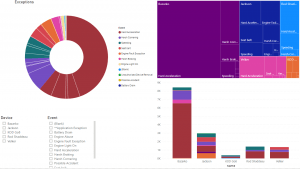
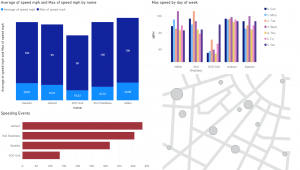

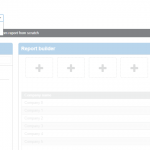
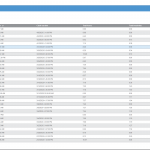
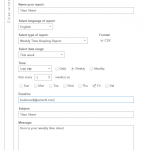










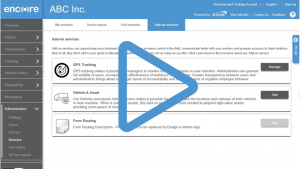


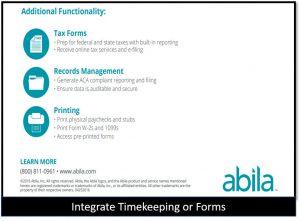
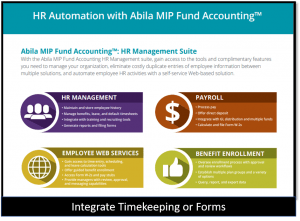

 Gain even greater insight into the daily activities of your fleet using the combination of Geotab and Actsoft. Geotab devices provide detailed data collection and seamless integration with our solutions; learn more about the ways your vehicles are being used daily with the power of this tandem.
Gain even greater insight into the daily activities of your fleet using the combination of Geotab and Actsoft. Geotab devices provide detailed data collection and seamless integration with our solutions; learn more about the ways your vehicles are being used daily with the power of this tandem.



 Actsoft partnered with Odin to provide our solutions overseas, through payment processing integrations. Odin helps us support user management for our software; customers can also purchase our products through Odin’s billing platform.
Actsoft partnered with Odin to provide our solutions overseas, through payment processing integrations. Odin helps us support user management for our software; customers can also purchase our products through Odin’s billing platform.

 VisTracks powers our Electronic Logging Device (ELD) solution, which enables transportation businesses to easily automate their hours of service logs, remain in governmental compliance, and reduce their potential to incur costly fines.
VisTracks powers our Electronic Logging Device (ELD) solution, which enables transportation businesses to easily automate their hours of service logs, remain in governmental compliance, and reduce their potential to incur costly fines. Integration between Actsoft solutions and BeWhere’s software products is available. Take your team’s asset tracking, cellular data connectivity, and field insight a step further with effective, cross-application compatibility.
Integration between Actsoft solutions and BeWhere’s software products is available. Take your team’s asset tracking, cellular data connectivity, and field insight a step further with effective, cross-application compatibility.
 CalAmp tracking devices for vehicles and assets alike are compatible with Actsoft solutions, making it easy for you to efficiently monitor your equipment and fleet cars. Help your team enhance accountability, safety, and savings through a combination of easily installed hardware and intuitive software.
CalAmp tracking devices for vehicles and assets alike are compatible with Actsoft solutions, making it easy for you to efficiently monitor your equipment and fleet cars. Help your team enhance accountability, safety, and savings through a combination of easily installed hardware and intuitive software.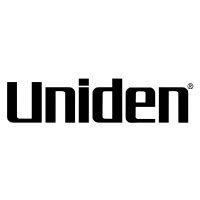 Our partnership with Uniden is ideal for companies looking to gain advanced diagnostics on their fleets. Uniden’s extensive product listing of car electronics like radios, dash cams, radar detectors, and in-vehicle communicators work in concert with Actsoft’s solutions to better connect your vehicles to the company headquarters.
Our partnership with Uniden is ideal for companies looking to gain advanced diagnostics on their fleets. Uniden’s extensive product listing of car electronics like radios, dash cams, radar detectors, and in-vehicle communicators work in concert with Actsoft’s solutions to better connect your vehicles to the company headquarters. Kyocera offers a wide range of mobile devices, ranging in design from traditional phones to ultra-durable handset technology. Actsoft is able to equip organizations in a variety of different industries with solutions for improved business, while Kyocera supplies the technology they can flawlessly operate on.
Kyocera offers a wide range of mobile devices, ranging in design from traditional phones to ultra-durable handset technology. Actsoft is able to equip organizations in a variety of different industries with solutions for improved business, while Kyocera supplies the technology they can flawlessly operate on.

 Our software is the perfect complement to Apple’s user-friendly technology. Equip your workforce with the devices and solutions it needs for optimized productivity during daily operations with Apple and Actsoft.
Our software is the perfect complement to Apple’s user-friendly technology. Equip your workforce with the devices and solutions it needs for optimized productivity during daily operations with Apple and Actsoft.
 Actsoft and Sanyo teamed up to merge intuitive business management software with the technology of today. This partnership allows us to provide you with all the tools your team needs for improved workflows, better coordination, and optimized productivity.
Actsoft and Sanyo teamed up to merge intuitive business management software with the technology of today. This partnership allows us to provide you with all the tools your team needs for improved workflows, better coordination, and optimized productivity. Motorola’s mobile technology works in tandem with our solutions to provide extra versatility to your business practices. Coupled with our software’s features, Motorola’s reliable devices make connecting your workforce simpler than ever to do.
Motorola’s mobile technology works in tandem with our solutions to provide extra versatility to your business practices. Coupled with our software’s features, Motorola’s reliable devices make connecting your workforce simpler than ever to do. We’re able to bundle certain solutions of ours (including our Electronic Visit Verification options) with Samsung devices to help your team achieve as much functionality as possible, while keeping rates affordable. Use these combinations for accurate recordkeeping, improved communication, and smarter data collection in the field.
We’re able to bundle certain solutions of ours (including our Electronic Visit Verification options) with Samsung devices to help your team achieve as much functionality as possible, while keeping rates affordable. Use these combinations for accurate recordkeeping, improved communication, and smarter data collection in the field.